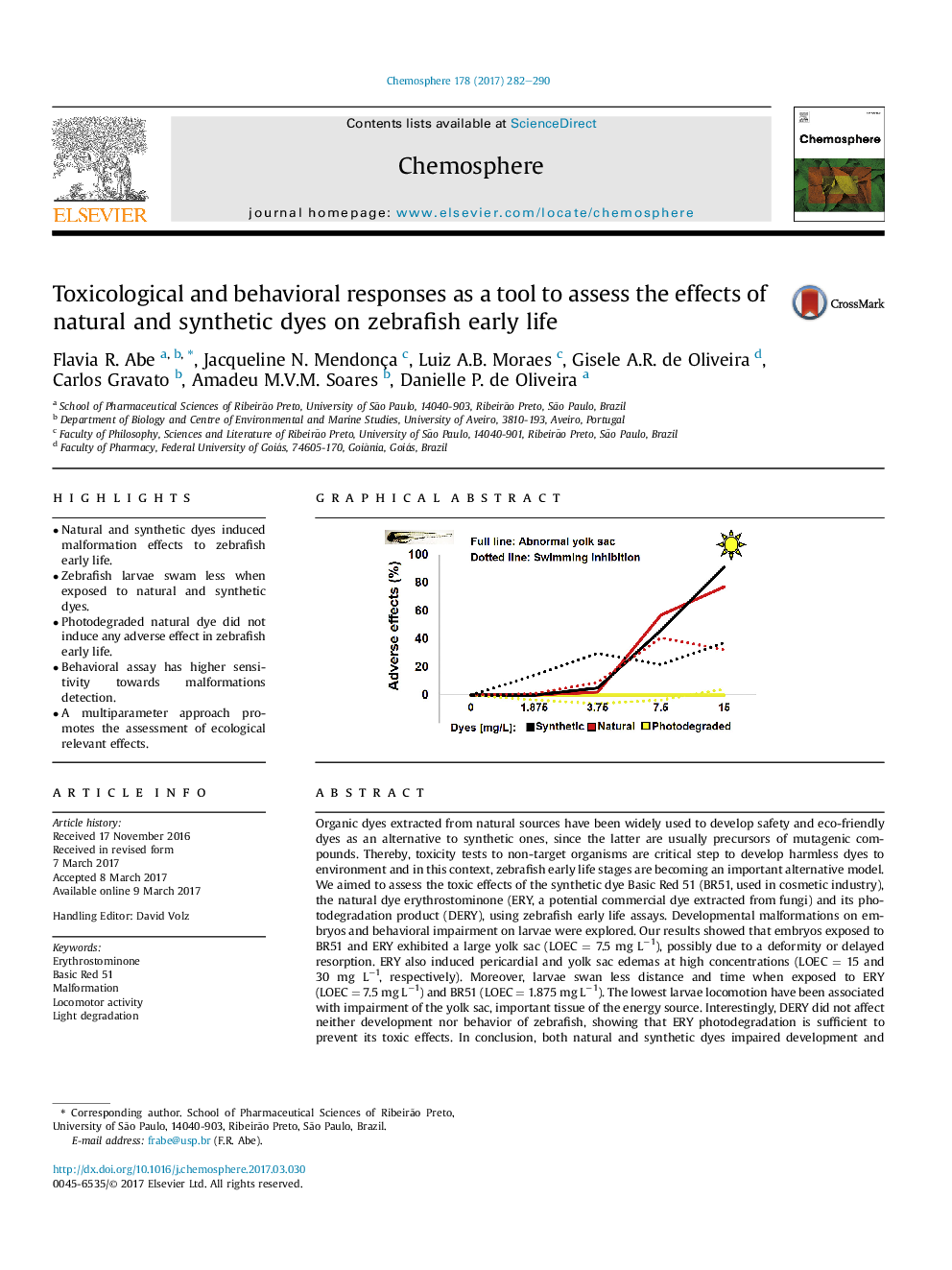| Article ID | Journal | Published Year | Pages | File Type |
|---|---|---|---|---|
| 5747249 | Chemosphere | 2017 | 9 Pages |
â¢Natural and synthetic dyes induced malformation effects to zebrafish early life.â¢Zebrafish larvae swam less when exposed to natural and synthetic dyes.â¢Photodegraded natural dye did not induce any adverse effect in zebrafish early life.â¢Behavioral assay has higher sensitivity towards malformations detection.â¢A multiparameter approach promotes the assessment of ecological relevant effects.
Organic dyes extracted from natural sources have been widely used to develop safety and eco-friendly dyes as an alternative to synthetic ones, since the latter are usually precursors of mutagenic compounds. Thereby, toxicity tests to non-target organisms are critical step to develop harmless dyes to environment and in this context, zebrafish early life stages are becoming an important alternative model. We aimed to assess the toxic effects of the synthetic dye Basic Red 51 (BR51, used in cosmetic industry), the natural dye erythrostominone (ERY, a potential commercial dye extracted from fungi) and its photodegradation product (DERY), using zebrafish early life assays. Developmental malformations on embryos and behavioral impairment on larvae were explored. Our results showed that embryos exposed to BR51 and ERY exhibited a large yolk sac (LOEC = 7.5 mg Lâ1), possibly due to a deformity or delayed resorption. ERY also induced pericardial and yolk sac edemas at high concentrations (LOEC = 15 and 30 mg Lâ1, respectively). Moreover, larvae swan less distance and time when exposed to ERY (LOEC = 7.5 mg Lâ1) and BR51 (LOEC = 1.875 mg Lâ1). The lowest larvae locomotion have been associated with impairment of the yolk sac, important tissue of the energy source. Interestingly, DERY did not affect neither development nor behavior of zebrafish, showing that ERY photodegradation is sufficient to prevent its toxic effects. In conclusion, both natural and synthetic dyes impaired development and behavior of zebrafish early life, therefore, a simple treatment of the natural dye can prevent the aquatic life impact.
Graphical abstractDownload high-res image (92KB)Download full-size image
